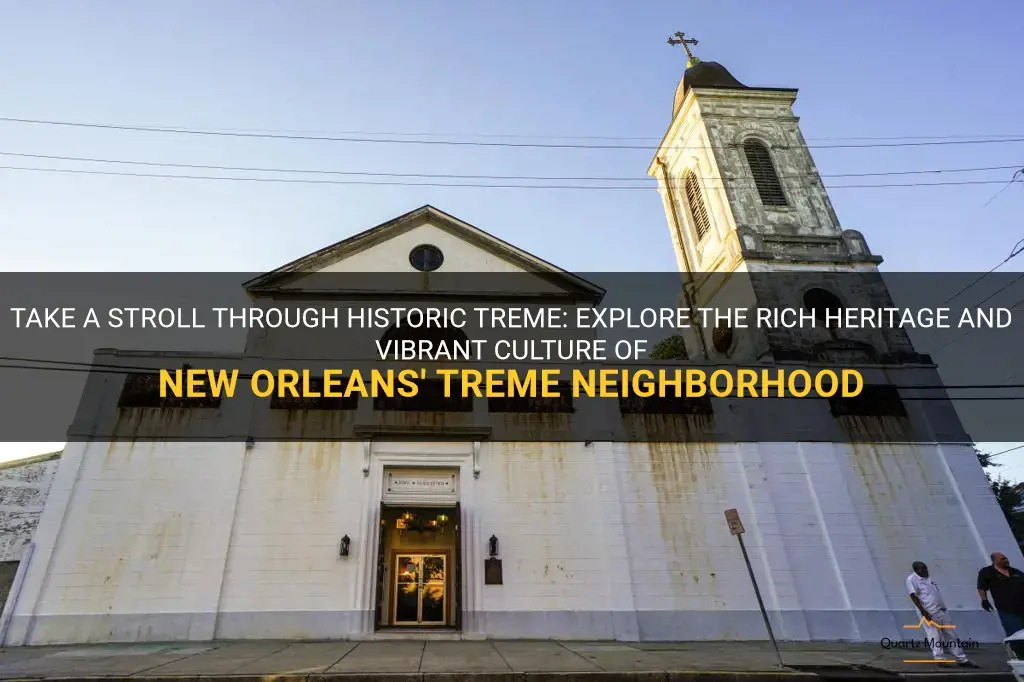
Welcome to Treme, the heartbeat of New Orleans. With a rich history dating back to the 18th century, this vibrant neighborhood is a testament to the resilience and creativity of the African American community. From its famous jazz roots to its vibrant cultural traditions, Treme offers a unique and immersive experience for visitors seeking to connect with the city's storied past. Join us as we take a stroll through the historic streets of Treme, exploring its charming architecture, renowned music venues, and mouthwatering cuisine. Get ready to be enchanted by the sights, sounds, and flavors of this iconic neighborhood, and discover why Treme truly is a treasure trove of New Orleans' heritage and culture.
| Activity | Category |
|---|---|
| Visit Congo Square | Historic Site |
| Explore the Backstreet Cultural Museum | Museum |
| Attend a Second Line Parade | Cultural Event |
| Visit the New Orleans African American Museum | Museum |
| Enjoy live music at the Candlelight Lounge | Music Venue |
| Tour the St. Augustine Church | Historic Site |
| Visit the Tremé Market Branch Library | Library |
| Explore the Louis Armstrong Park | Park |
| Dine at Dooky Chase Restaurant | Restaurant |
| Visit the Mahalia Jackson Theater | Performing Arts |
| Attend a jazz performance at the Little Gem Saloon | Music Venue |
What You'll Learn
- St. Augustine Church: Visit the oldest African-American Catholic church in the United States, located in Treme
- Backstreet Cultural Museum: Explore a collection of Mardi Gras Indian suits, second line artifacts, and other treasures showcasing the unique culture of Treme
- Congo Square: Experience the historic site where African slaves were allowed to congregate and express their cultural traditions, now a vibrant gathering place for musicians and artists
- St. Louis Cemetery No. 1: Take a guided tour of this famous and historic cemetery, the final resting place of many notable New Orleans residents
- Armstrong Park: Enjoy the beautiful green space and outdoor music at this park named after legendary jazz musician Louis Armstrong
- Tremé Brass Band: Catch a live performance by one of the neighborhood's famous brass bands at a local venue or during a second line parade
- Dooky Chase's Restaurant: Indulge in delicious Creole cuisine at this iconic Treme restaurant, known for its history and contributions to the civil rights movement
- Our Lady of Guadalupe Church: Visit this historic church that serves as a spiritual and cultural center for the Hispanic community in Treme
- Tremé Market Branch Library: Browse the collection of books and resources, and learn more about the history and culture of Treme
- New Orleans Jazz National Historical Park: Take a self-guided tour or attend a live jazz performance at this park, dedicated to preserving and promoting the city's jazz heritage

St. Augustine Church: Visit the oldest African-American Catholic church in the United States, located in Treme
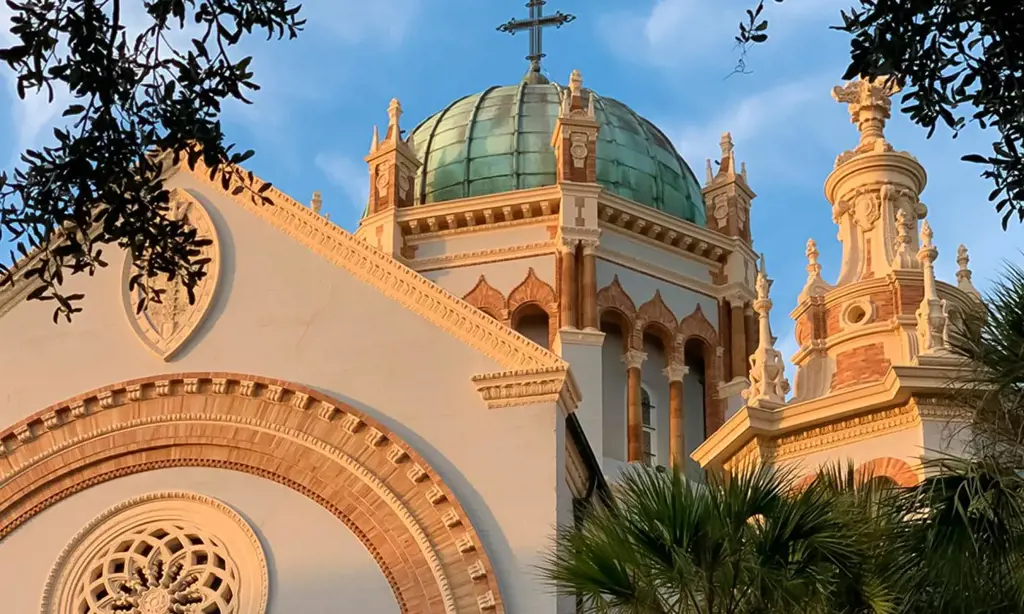
| Characteristic | Description |
|---|---|
| Name | Saint Augustine Catholic Church |
| Type | Catholic church in New Orleans, Louisiana |
| Website | Go to website |
| Rating / Review count | 4.7 / 224 |
| Address | 1210 Governor Nicholls St, New Orleans, LA 70116 |
| Phone | (504) 525-5934 |
| Profiles |  |
Located in the historic Treme neighborhood of New Orleans, St. Augustine Church is a beacon of African-American history and culture. Often referred to as the "Mother Church of Black Catholics," St. Augustine Church holds the distinction of being the oldest African-American Catholic church in the United States.
The church was founded in 1841 by free people of color who sought to establish a place of worship where they could freely practice their faith without discrimination. At the time, racial segregation was prevalent, and African-Americans were often excluded from attending mainstream Catholic churches. As a result, St. Augustine Church quickly became a center of religious and social life for the city's black community.
Despite facing adversity throughout its history, St. Augustine Church has remained a symbol of strength, resilience, and faith. The church building itself is a testament to the rich cultural heritage of the African-American community. With its striking Gothic Revival architecture and its vibrant stained glass windows, St. Augustine Church stands as a visual representation of the strength and resilience of its congregation.
Inside the church, visitors can admire the exquisite artwork and historical artifacts that reflect the history and struggles of African-Americans. The church is home to a collection of impressive religious artworks, including statues, paintings, and sculptures. These works of art provide a glimpse into the rich cultural and religious heritage of African-Americans.
St. Augustine Church is also known for its renowned choir, which has gained national recognition for its powerful and soul-stirring performances. The choir draws upon the musical traditions of the African-American community, incorporating elements of gospel, jazz, and traditional hymns into their repertoire.
As visitors explore St. Augustine Church, they will also learn about the important role the church has played in the civil rights movement. During the 1960s, the church served as a gathering place for activists and leaders such as Martin Luther King Jr., who sought to fight for racial equality and social justice.
Today, St. Augustine Church continues to serve as a place of worship for the African-American community, as well as a site of historical significance. Visitors are welcomed to attend Masses and experience the vibrant and inspiring worship services that take place within the church.
A visit to St. Augustine Church offers a unique opportunity to delve into the rich history and culture of the African-American community in New Orleans. As the oldest African-American Catholic church in the United States, it stands as a testament to the strength, resilience, and faith of a community that has overcome adversity and has made significant contributions to both the city of New Orleans and the broader American society.
12 Exciting Things to Do in Seattle in July
You may want to see also

Backstreet Cultural Museum: Explore a collection of Mardi Gras Indian suits, second line artifacts, and other treasures showcasing the unique culture of Treme
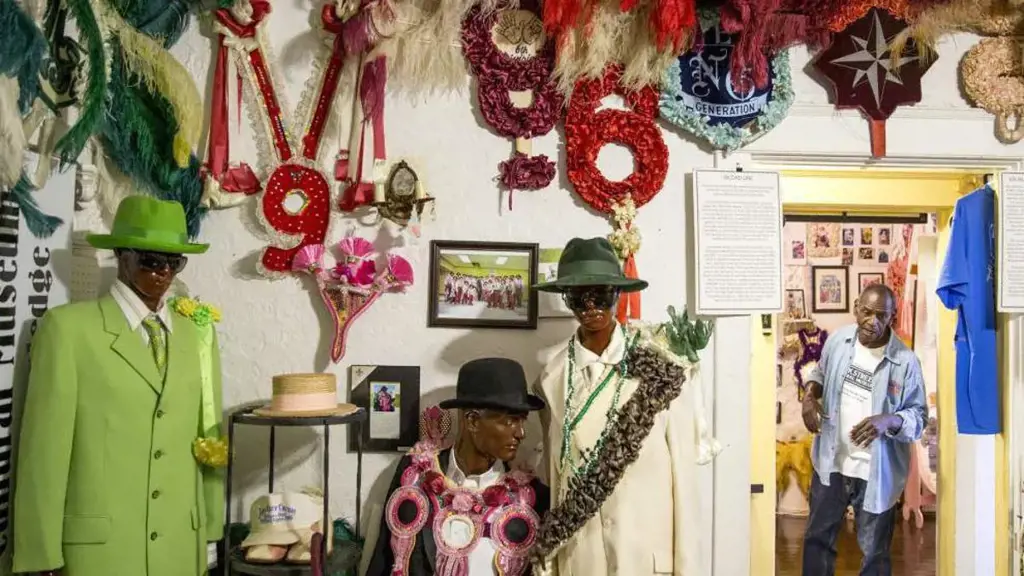
Located in the heart of Treme, the Backstreet Cultural Museum is a hidden gem that offers visitors a rare glimpse into the vibrant and rich cultural heritage of this historic New Orleans neighborhood.
The museum is dedicated to preserving and showcasing the traditions of the Mardi Gras Indians, second line parades, jazz funerals, and social aid and pleasure clubs that are deeply rooted in the Treme community. As you step inside the museum, you are transported into a world filled with colorful costumes, rhythmic beats, and a sense of pride in its residents.
One of the highlights of the Backstreet Cultural Museum is its extensive collection of Mardi Gras Indian suits. These elaborately handcrafted costumes are meticulously embellished with beads, feathers, and sequins, and are worn by the members of Mardi Gras Indian tribes during the annual Carnival season. Each suit tells a unique story and is a testament to the artistic craftsmanship and rich history of the Mardi Gras Indian tradition.
In addition to the Mardi Gras Indian suits, the museum also showcases a variety of artifacts related to second line parades. Second line parades are a quintessential part of New Orleans culture, where community members gather to celebrate and dance to the lively sounds of brass bands. The museum displays second line umbrellas, banners, and photographs that capture the energy and spirit of these festive parades.
Another fascinating aspect of the Backstreet Cultural Museum is its collection of jazz funeral memorabilia. Jazz funerals are a unique New Orleans tradition where mourners gather to celebrate the life of a deceased loved one with lively music and dancing. The museum displays photographs, funeral programs, and instruments used during these vibrant and emotional ceremonies. It offers visitors an opportunity to understand the cultural importance of jazz funerals in the Treme community.
The Backstreet Cultural Museum also pays tribute to the social aid and pleasure clubs that have played a significant role in the history of Treme. These clubs were formed in the early 20th century to provide financial and social support to African American communities. The museum features photographs, costumes, and other artifacts that highlight the history and contributions of these clubs to the Treme neighborhood.
Visiting the Backstreet Cultural Museum is a truly immersive experience that allows visitors to delve into the unique and captivating culture of Treme. Whether you are interested in the Mardi Gras Indian tradition, second line parades, or the heritage of social aid and pleasure clubs, you will find something to pique your curiosity and deepen your understanding of this vibrant community.
So, if you find yourself in New Orleans, make sure to carve out some time to explore the Backstreet Cultural Museum. It is a hidden treasure that offers a glimpse into the soul of Treme and the rich traditions that have shaped this remarkable neighborhood.
Exploring Las Galeras: Top Things to See and Do
You may want to see also

Congo Square: Experience the historic site where African slaves were allowed to congregate and express their cultural traditions, now a vibrant gathering place for musicians and artists
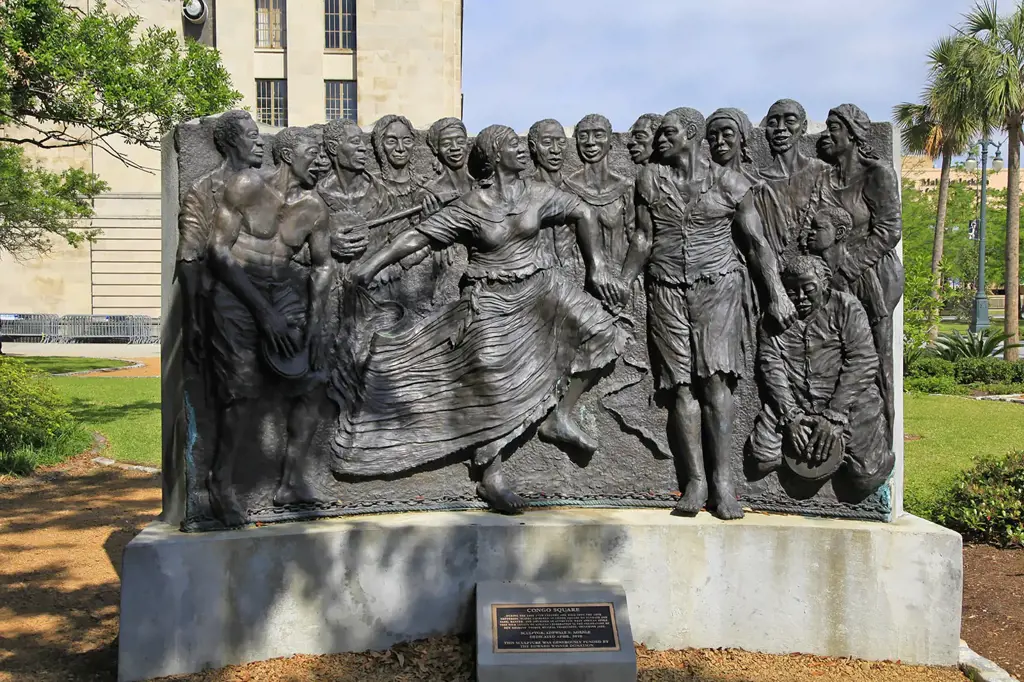
Congo Square, located in the heart of New Orleans, has a rich history that dates back to the days of slavery. This historic site, also known as Louis Armstrong Park, was a place where African slaves were allowed to congregate and express their cultural traditions. Today, Congo Square is a vibrant gathering place for musicians and artists, and an important symbol of resilience and freedom.
During the 18th and 19th centuries, New Orleans was one of the largest slave markets in the United States. African slaves were brought to the city to work on plantations and in households, and their cultural practices were often suppressed. However, on Sundays, slaves were given a day off to rest and engage in their own activities. In Congo Square, they were allowed to come together, play music, dance, and even sell goods.
Congo Square soon became a hub of creativity and cultural expression. African drumming, singing, and dancing could be heard and seen from all corners of the square. The sounds and rhythms that were created in Congo Square laid the foundation for what would become jazz and other forms of American music.
In addition to music, Congo Square was also a place where African slaves could practice their traditional religions and customs. They would gather to perform rituals, make offerings, and celebrate their cultural heritage. This sense of community and identity was incredibly important in a time where slaves were stripped of their names, languages, and traditions.
Sadly, as the city of New Orleans grew, Congo Square began to lose its significance. The space was paved over and transformed into a park in the 19th century. However, in recent years, there has been a resurgence of interest in preserving and celebrating the historical importance of the site.
Today, Congo Square is a vibrant and bustling place, filled with musicians, artists, and people from all walks of life. It has become a symbol of New Orleans' cultural heritage and a testament to the resilience and creativity of its people. Every Sunday, the park comes alive with the sounds of drumming, singing, and dancing, as local musicians and performers pay homage to the traditions that were born in Congo Square.
Visitors to Congo Square can experience the rich history and culture of New Orleans. The park features a monument dedicated to the African slaves who gathered there, as well as plaques that tell the story of its significance. It is a place where people can learn about the origins of jazz and other African-American musical styles, and witness the power of cultural expression.
Congo Square is not just a historic site; it is a living testament to the indomitable spirit of a people who turned adversity into art. It is a place where the echoes of the past can still be heard, and where the traditions of generations of African slaves continue to thrive. A visit to Congo Square is a powerful reminder of the strength of the human spirit and the enduring power of music and cultural expression.
12 Awesome Indoor Activities to Try on a Rainy Day in Maine
You may want to see also

St. Louis Cemetery No. 1: Take a guided tour of this famous and historic cemetery, the final resting place of many notable New Orleans residents
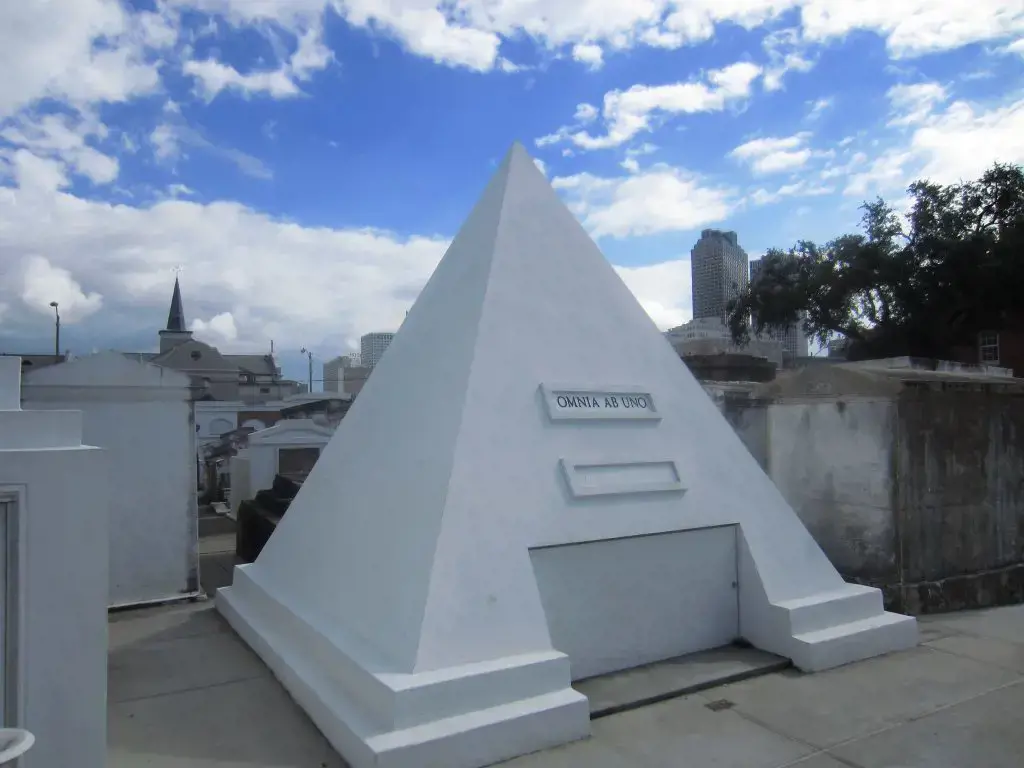
| Characteristic | Description |
|---|---|
| Name | St. Louis Cemetery No. 1 Official Tour |
| Type | Cemetery in New Orleans, Louisiana |
| Website | Go to website |
| Rating / Review count | 4.9 / 483 |
| Address | 501 Basin St, New Orleans, LA 70112 |
| Phone | (504) 777-3027 |
| Hours | Sunday - 9 AM–3:45 PM Monday - 9 AM–3:45 PM Tuesday - 9 AM–3:45 PM Wednesday - 9 AM–3:45 PM Thursday - 9 AM–3:45 PM Friday - 9 AM–3:45 PM Saturday - 9 AM–3:45 PM |
| Profiles |  |
Located in the heart of New Orleans, St. Louis Cemetery No. 1 is one of the oldest and most renowned cemeteries in the city. As the final resting place of many notable New Orleans residents, it holds a special place in the city's history and culture. Taking a guided tour of this cemetery can provide visitors with a fascinating glimpse into the past and a deeper understanding of the unique burial traditions of New Orleans.
One of the most distinctive features of St. Louis Cemetery No. 1 is its above-ground tombs and mausoleums. Due to the high water table in New Orleans, traditional below-ground burials are not feasible, so the city developed above-ground tombs as a practical and symbolic way to inter the deceased. These tombs, often referred to as "cities of the dead," are constructed from brick or stone and feature elaborate designs and ornamentation. Many of them are family tombs, housing multiple generations of relatives.
During a guided tour of St. Louis Cemetery No. 1, visitors can explore these unique tombs and learn about the families that have been laid to rest within them. The tour guides, often knowledgeable locals, provide insights into the history of the cemetery, its architectural styles, and the stories behind some of the notable individuals buried there.
One such notable resident is Marie Laveau, the famous Voodoo Queen of New Orleans. Her tomb is a popular site for visitors, who often leave tokens and offerings to seek her blessings and assistance. Other famous residents include the mayor of New Orleans, Étienne de Boré, and Homer Plessy, the plaintiff in the landmark Plessy v. Ferguson case. Each tomb has its own unique story, and the guided tours provide an opportunity to learn about the lives and legacies of these individuals.
In addition to the famous residents, St. Louis Cemetery No. 1 also has a rich historical and cultural significance. Established in 1789, it is one of the oldest cemeteries in the city and has witnessed centuries of New Orleans' history. The cemetery is also a melting pot of various religious and cultural traditions, reflecting the diverse heritage of New Orleans. From Catholic tombs adorned with religious symbols to Jewish and Protestant sections, the cemetery showcases the tapestry of beliefs and practices that have shaped the city.
Moreover, the cemetery's picturesque ambiance and atmospheric surroundings make it a popular attraction for visitors to New Orleans. The moss-covered tombs, winding pathways, and tranquil atmosphere create a unique and somewhat haunting experience. The guided tours, often conducted by local experts or cemetery preservation organizations, ensure that visitors can fully appreciate the historical and cultural significance of the cemetery while respecting the sanctity of the space.
For those interested in exploring the vibrant history and unique burial traditions of New Orleans, a guided tour of St. Louis Cemetery No. 1 is a must. From learning about the notable residents to marveling at the architectural beauty of the tombs, this experience offers a glimpse into the past and an opportunity to appreciate the rich heritage of the city. Whether you are a history buff, a lover of culture, or simply curious about the mysteries of New Orleans, venturing into St. Louis Cemetery No. 1 will undoubtedly be a memorable and enlightening experience.
13 Fun Activities to Do in Bristol, RI This Weekend
You may want to see also

Armstrong Park: Enjoy the beautiful green space and outdoor music at this park named after legendary jazz musician Louis Armstrong
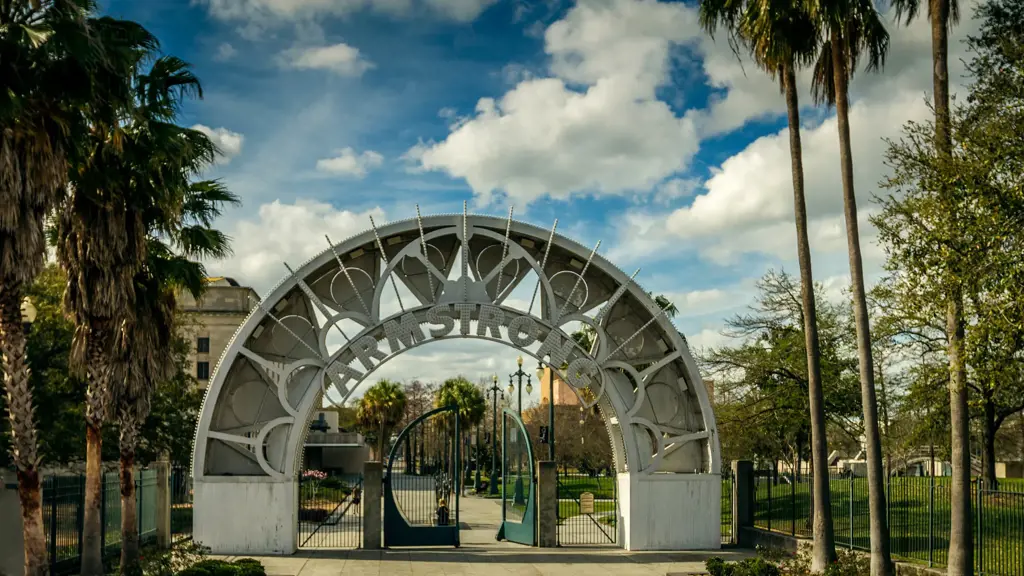
Armstrong Park, located in the heart of Tremé, New Orleans, is a beautiful green space that offers visitors a chance to relax and enjoy the beauty of nature. Named after the legendary jazz musician Louis Armstrong, this park is a must-visit destination for both locals and tourists.
One of the highlights of Armstrong Park is the outdoor music that can be enjoyed throughout the year. The park is often filled with the sounds of jazz, blues, and other genres of music. Visitors can bring a blanket or a chair and sit back and enjoy the live performances by talented musicians. The music creates a lively atmosphere and adds to the overall experience of visiting the park.
In addition to the music, Armstrong Park also offers several other attractions for visitors to enjoy. One of the main features of the park is the beautiful Congo Square. This historic site was once a gathering place for enslaved Africans and free people of color who would gather there to socialize, dance, and play music. Today, Congo Square serves as a reminder of the rich cultural heritage of the Tremé neighborhood and the significant role it played in the development of jazz and other African American art forms.
Another notable feature of Armstrong Park is the presence of several statues and monuments that pay tribute to the contributions of various artists and musicians. The most prominent of these is the statue of Louis Armstrong himself, which stands proudly at the entrance of the park. This statue serves as a reminder of the immense talent and impact of the jazz legend in shaping the musical landscape of New Orleans and the entire world.
For those who prefer to take a leisurely stroll or have a picnic, Armstrong Park offers plenty of open spaces, walking paths, and picnic areas. The park is adorned with beautiful landscaping, including a variety of trees and flowers, providing a peaceful and serene setting for visitors to relax and enjoy the outdoors.
Armstrong Park also hosts various events and festivals throughout the year, attracting a diverse crowd of locals and tourists. These events feature cultural performances, food vendors, arts and crafts, and much more, offering a unique opportunity to experience the vibrant culture and spirit of New Orleans.
With its beautiful green spaces, outdoor music, and rich history, Armstrong Park is a true gem in the heart of Tremé, New Orleans. Whether you are a music lover, a history enthusiast, or simply looking for a place to enjoy nature, a visit to Armstrong Park is definitely worth adding to your New Orleans itinerary.
12 Fun Things to Do in Buena Vista, Colorado
You may want to see also

Tremé Brass Band: Catch a live performance by one of the neighborhood's famous brass bands at a local venue or during a second line parade

The Tremé neighborhood in New Orleans is known for its rich musical heritage, and one of the best ways to experience this is by catching a live performance by one of the area's famous brass bands. These bands, often referred to as "second line" bands, play a mix of traditional New Orleans jazz, funk, and R&B, and their energetic and lively performances are not to be missed.
One of the most well-known brass bands in Tremé is the Tremé Brass Band. Founded in 1995 by trumpeter Benny Jones Sr., the Tremé Brass Band is a true representation of the neighborhood's musical roots. The band’s members are deeply rooted in the local music scene, with many of them having played with other iconic New Orleans musicians like Louis Armstrong and Fats Domino.
The Tremé Brass Band regularly performs at local venues throughout the Tremé neighborhood and the rest of New Orleans. Check with the local music listings or ask around to find out when and where they will be playing next. Many venues, such as Snug Harbor and the Maple Leaf Bar, feature live music most nights of the week, and it's not uncommon for the Tremé Brass Band to make an appearance.
If you really want to experience the full joy and energy of a brass band performance, try to catch one of the band's performances during a second line parade. Second lines are a New Orleans tradition that dates back over a hundred years and are an integral part of the city's culture. These parades start with a brass band leading the way, followed by a "second line" of people who dance, sing, and wave handkerchiefs or umbrellas in the air. The Tremé neighborhood is known for its vibrant second line parades, and the Tremé Brass Band often plays at these events.
To find out about upcoming second line parades, keep an eye on local event listings or ask around in the Tremé neighborhood. These parades are spontaneous and can pop up at any time, so if you happen to see a crowd gathering and a brass band starting to play, join in and experience the true essence of New Orleans.
So, whether you catch a live performance by the Tremé Brass Band at a local venue or join in the fun of a second line parade, experiencing the music of Tremé is an essential part of any visit to New Orleans. The rich history and vibrant energy of the neighborhood's brass bands will leave you with a true taste of the unique culture that makes New Orleans so special.
12 Fun Things to Do in Dallas in February
You may want to see also

Dooky Chase's Restaurant: Indulge in delicious Creole cuisine at this iconic Treme restaurant, known for its history and contributions to the civil rights movement
Located in the vibrant and historic neighborhood of Treme, Dooky Chases Restaurant is a true New Orleans institution. Known for its delicious Creole cuisine, this iconic restaurant has been a staple in the community for over 75 years. However, Dooky Chases is more than just a place to get a fantastic meal. It holds a special place in the history of New Orleans and the civil rights movement.
Dooky Chases was founded in 1941 by Emily and Dooky Chase Sr. as a sandwich shop and bar. Over the years, it evolved into a full-service restaurant, becoming a popular spot for locals and tourists alike. However, its real impact goes far beyond its food.
Under the leadership of Leah Chase, Dooky Chases became a gathering place for African American leaders during the civil rights movement. Leah Chase, also known as the Queen of Creole Cuisine, opened her doors to activists, providing them with a safe space to strategize and organize. The restaurant became a hub for meetings and discussions, and its walls witnessed some of the most significant moments in the fight for racial equality.
Notable figures in the civil rights movement, including Martin Luther King Jr., Thurgood Marshall, and many others, dined at Dooky Chases. The restaurant became a symbol of resilience, as well as a testament to the power of food and community in facilitating change. Leah Chase's cooking became a catalyst for progress, as she used her culinary talents to feed the hunger for justice and equality.
Today, Dooky Chases continues to carry on its rich history while delighting diners with its mouthwatering Creole cuisine. The menu is filled with traditional New Orleans classics, such as gumbo, jambalaya, and shrimp Creole. Each dish is prepared with the utmost care and attention to detail, ensuring that every bite is bursting with flavor.
In addition to its culinary offerings, Dooky Chases is also home to an impressive collection of African American art. The walls of the restaurant are adorned with paintings, sculptures, and photographs, showcasing the talent and creativity of African American artists. This commitment to celebrating culture and art further cements Dooky Chases' status as a cultural institution.
A visit to Dooky Chases is not just a culinary experience; it is a journey through history. As you step into the restaurant, you can feel the echoes of the past, the struggles and triumphs that have shaped both Treme and the nation. Whether you're a local or a visitor, a meal at Dooky Chases is an opportunity to honor the legacy of the civil rights movement while savoring the flavors of New Orleans.
So the next time you find yourself in Treme, make sure to make a reservation at Dooky Chases Restaurant. Indulge in the delectable Creole cuisine, and take a moment to appreciate the significance of this iconic establishment. Dooky Chases is more than just a restaurant; it is a living testament to the power of food, community, and the fight for justice.
12 Fantastic Things to Do in Lhasa
You may want to see also

Our Lady of Guadalupe Church: Visit this historic church that serves as a spiritual and cultural center for the Hispanic community in Treme
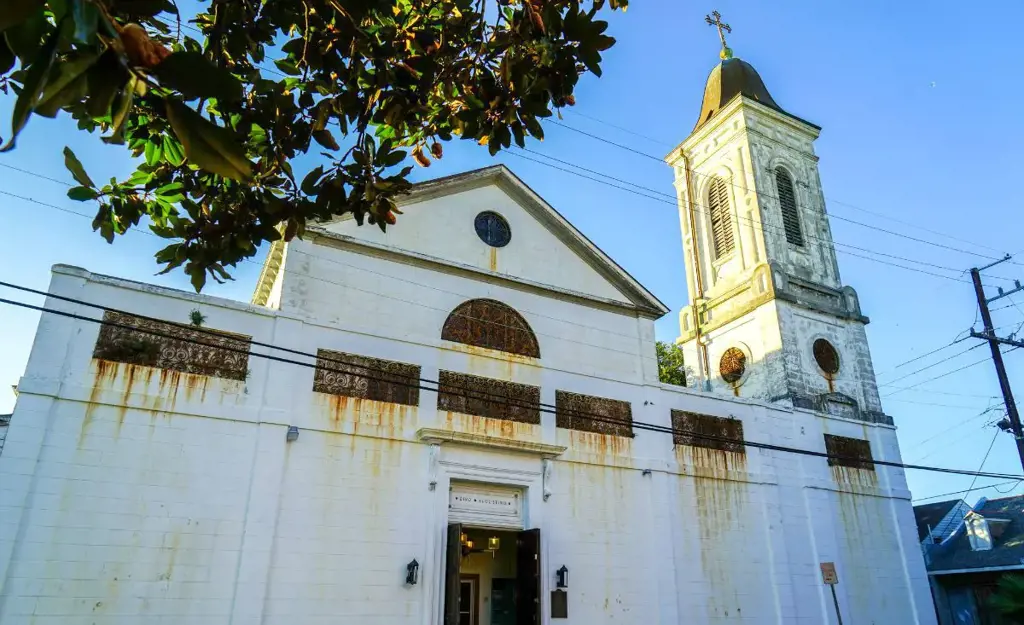
The Treme neighborhood in New Orleans is known for its rich history and vibrant culture. One of the iconic landmarks in this neighborhood is Our Lady of Guadalupe Church. This historic church not only serves as a place of worship but also as a spiritual and cultural center for the Hispanic community in Treme.
Our Lady of Guadalupe Church holds a significant place in the history of Treme. It was established in the early 20th century to cater to the spiritual needs of the growing Hispanic population in the area. The church was originally a small wooden structure, but it has undergone several renovations and expansions over the years to accommodate the increasing number of worshippers.
Visiting Our Lady of Guadalupe Church is like stepping into a time capsule. The church's architecture reflects the eclectic mix of influences that shape Treme's cultural landscape. From the outside, the church boasts a beautiful Spanish Revival-style facade, with its intricate details and vibrant colors. Inside, you will find stunning stained glass windows depicting religious scenes, ornate altars, and religious statues that exude a sense of tranquility and spirituality.
Apart from being a place of worship, Our Lady of Guadalupe Church also serves as a cultural center for the Hispanic community in Treme. The church organizes various events and activities that celebrate the rich cultural heritage of the community. From traditional religious processions to vibrant fiestas showcasing music, dance, and cuisine, these events provide an opportunity for both the Hispanic and wider communities to come together and appreciate the diversity that enriches Treme.
For tourists and visitors, a visit to Our Lady of Guadalupe Church is a chance to delve into the history and vibrant spirit of Treme. The church welcomes all who seek solace, spirituality, or simply a glimpse into the cultural fabric of the neighborhood. Whether you are devoutly religious or simply curious about the unique character of Treme, Our Lady of Guadalupe Church offers a warm and inviting atmosphere for all.
So, if you find yourself in Treme, make sure to visit Our Lady of Guadalupe Church. Immerse yourself in its history, admire its architectural beauty, and experience the cultural richness that this iconic landmark represents.
12 Fun Activities Near Grand Ole Opry
You may want to see also

Tremé Market Branch Library: Browse the collection of books and resources, and learn more about the history and culture of Treme
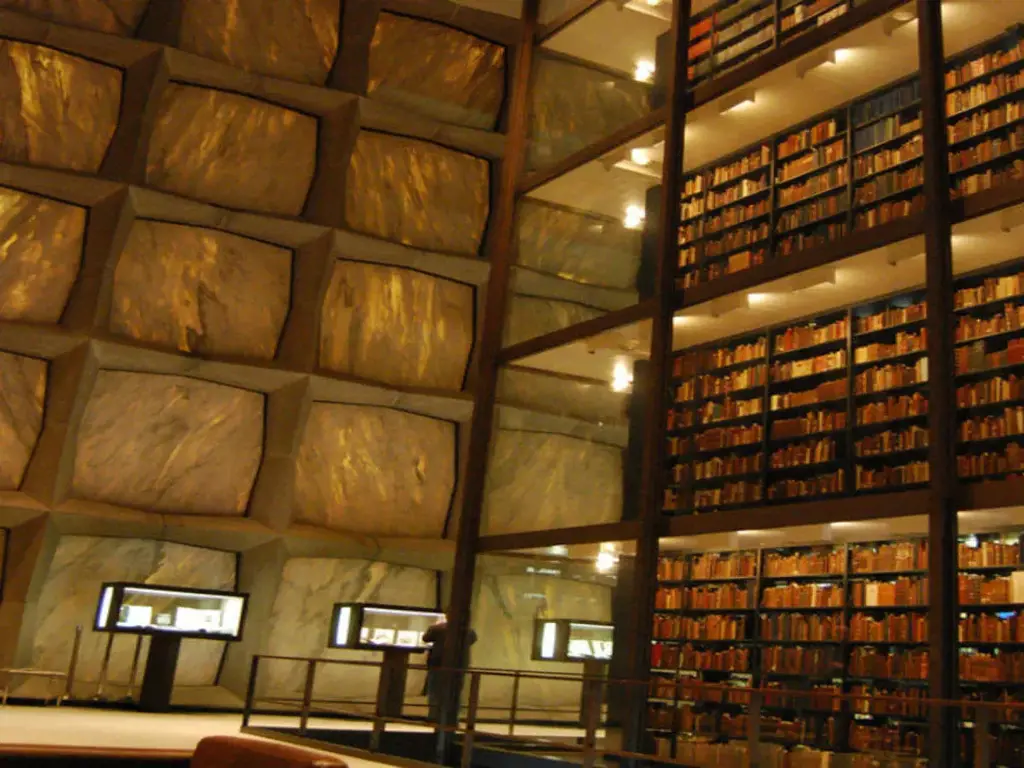
Tremé is a historic neighborhood in New Orleans that is known for its rich cultural heritage and vibrant community. One of the landmarks in Treme is the Tremé Market Branch Library, a hub for learning and discovery.
Located in the heart of the neighborhood, the Tremé Market Branch Library is a treasure trove of books, resources, and knowledge. It is an important part of the cultural fabric of Treme, providing a space for residents to learn, grow, and connect with their community.
The library boasts an extensive collection of books, covering a wide range of subjects and genres. Visitors can browse through the shelves and discover everything from classic literature to contemporary bestsellers. Whether you're a fan of mystery novels, interested in history, or looking for self-help books, there's something for everyone at the Tremé Market Branch Library.
In addition to books, the library offers various other resources to its patrons. It has a collection of magazines and newspapers, providing access to up-to-date information and current events. For those who prefer digital resources, the library also offers e-books and audiobooks that can be borrowed and downloaded to your preferred device.
One of the highlights of the Tremé Market Branch Library is its emphasis on the history and culture of Treme. The library houses a dedicated section that focuses on the neighborhood's unique heritage, allowing visitors to delve deeper into its past. From books on the jazz music that originated in Treme to literature about the civil rights movement and the community's resilience, there are plenty of resources available to explore the rich history and culture of the neighborhood.
Beyond its diverse collection, the library also hosts various events and programs that engage the community. From author readings and book clubs to workshops and lectures, there is always something happening at the Tremé Market Branch Library. These events provide opportunities for residents to come together, share their love of books and learning, and celebrate the rich cultural heritage of Treme.
In conclusion, the Tremé Market Branch Library is an invaluable resource for the residents of Treme. With its extensive collection of books and resources, as well as its focus on the history and culture of the neighborhood, the library serves as a place for learning, inspiration, and community building. Whether you're a lifelong resident or just visiting, a trip to the Tremé Market Branch Library is a must for anyone looking to explore the heritage and spirit of this vibrant neighborhood.
14 Amazing Things to Do in Xiahe County, China
You may want to see also

New Orleans Jazz National Historical Park: Take a self-guided tour or attend a live jazz performance at this park, dedicated to preserving and promoting the city's jazz heritage
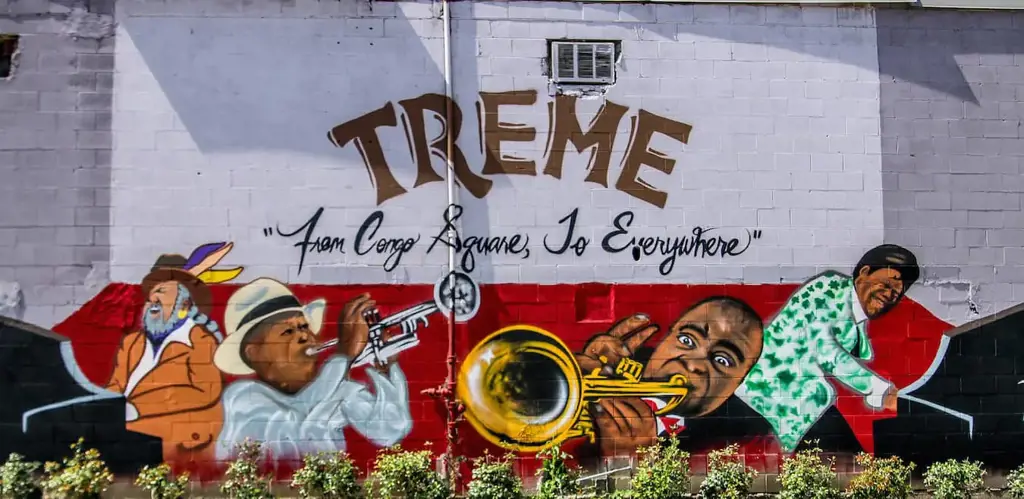
New Orleans is known as the birthplace of jazz, and its music scene is deeply rooted in the city's history and culture. One of the best places to experience the rich jazz heritage of New Orleans is by visiting the New Orleans Jazz National Historical Park. This park is dedicated to preserving and promoting the city's jazz heritage through various exhibits, self-guided tours, and live performances.
Located in the heart of the French Quarter, the New Orleans Jazz National Historical Park offers visitors a unique opportunity to immerse themselves in the world of jazz. The park features a visitor center where you can learn about the history of jazz in New Orleans, the musicians who shaped the genre, and the cultural significance of this music. The center also houses a collection of artifacts and exhibits that showcase the evolution of jazz over the years.
One of the highlights of the park is the self-guided tour, where you can explore the jazz landmarks and sites that were crucial to the development of the genre. The tour takes you through various neighborhoods, including the historic Tremé neighborhood, where many jazz musicians lived and performed. You can visit places like Congo Square, the birthplace of jazz, and Preservation Hall, a venue that has been hosting live jazz performances since the 1960s.
In addition to the self-guided tour, the New Orleans Jazz National Historical Park offers live jazz performances throughout the year. These performances are held at various locations within the park, including the visitor center and outdoor stages. The park collaborates with local musicians and bands to showcase the best of New Orleans jazz, giving visitors a chance to experience the music in an authentic and intimate setting.
Attending a live jazz performance at the park is a must-do for any music lover visiting New Orleans. The performances feature a mix of traditional jazz, modern interpretations, and improvisation, reflecting the diverse and dynamic nature of the genre. You can expect to hear lively tunes, soulful melodies, and contagious rhythms that will transport you back to the heyday of jazz.
Whether you are a dedicated jazz enthusiast or someone new to the genre, the New Orleans Jazz National Historical Park is a must-visit destination in the city. It offers a comprehensive experience that combines history, culture, and live performances, allowing you to fully immerse yourself in the vibrant world of jazz. So, make sure to add this park to your itinerary and discover why New Orleans is considered the jazz capital of the world.
12 Affordable and Fun Nighttime Activities in San Antonio
You may want to see also
Frequently asked questions
Treme is known for its rich cultural heritage and vibrant music scene. Popular attractions include the historic St. Louis Cemetery No. 1, the Backstreet Cultural Museum, and the Jazz & Heritage Center, which often hosts live music performances.
Yes, Treme offers a range of dining options for food lovers. Some popular restaurants include Dooky Chase's Restaurant, known for its Creole and soul food dishes, and Willie Mae's Scotch House, famous for its fried chicken. For a unique bar experience, visitors can check out the Candlelight Lounge, a local spot known for its live jazz performances.
While Treme has a rich cultural history, it is always important to stay aware of your surroundings and take precautionary measures. Like any urban area, it is recommended to stay in well-lit and populated areas, especially at night. It is also a good idea to consult local authorities or trusted sources for the most up-to-date information on safety in the neighborhood.







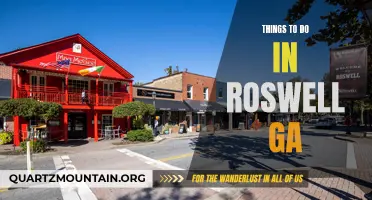
5 Comments
Eryn Peters
Edmund Massey
Duke Trotter
AuthorAyden Salinas
Alain Brady
Author